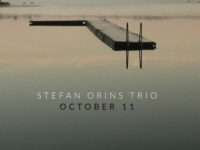by Mark Saleski
Several years ago, I happened upon a book called A Pattern Language. It was an odd purchase for me, because I’m not really an architecture person, at least not in the grand “Oooh, majestic building!” sense of the word. No, I was drawn to the book because the architectural patterns drawn and discussed — layouts of rooms, alcoves, gathering places, neighborhoods, cities — made a lot of sense to me and seemed to somehow appeal to my music-loving side.
Thinking about it a little bit more, the patterns that emerge in building and room construction do remind me of the more quirky aspects of music. This links in to my tendency to get lost in musical/visual synesthesia. A quick example might be when a musician steps completely away from a composition to deliver a short and seemingly only vaguely-related solo. My mind might see this as a little chamber attached to a much larger room. Or … a sitting area/alcove built off to the side of a bedroom.
It is these musical peculiarities that draw me in. They’re unexpected, and they make a piece of music more interesting by adding texture to the surface that we think we know.
Pianist Greg Burk’s Many Worlds is full of so many of these little side-trips that it’s tough to know where to begin. The album opens with “Sonny Time,” an atmospheric piece that’s reminiscent of Pharoah Sanders’ “Astral Traveling” (from Thembi), guided along melodically by Henry Cook’s flute. A constant wash of percussion gives the song an exotic feel.
An abrupt left turn awaits the ears on the next track, “BC.” Burk’s piano, Cook’s flute and Ron Seguin’s bass blast off on high-energy series of tag-team runs where one instrument plays an ascending line, and then hands it off to the next musician, who plays a descending line. After a long and dynamic piano solo, Cook and Seguin take off on a flute/bass battle, egged on by drummer Michel Lambert. It’s an exhilarating track that showcases both clever arrangements and Burk’s Cecil Taylor-ish, percussive approach.
The title track is similarly full of detail and dynamics. Leaping forward with the intensity of a David S. Ware or a latter years Coltrane thing, Burk and Cook slam horn lines against piano arpeggios to great effect. The mood swings wildly mid-composition as the whole band drops away to reveal Burk slowly floating a series of dark, open chords. The story told for the next few minutes almost seems like an apology for the tune’s early bombast.
My ears’ favorite song comes with the penultimate track “Particular.” There are prepared piano bits (sounding almost harp-like at times), a saxophone playing a postmodern blues (reminds me of those weird old Chanel #5 television ads), and just enough bass to imply a harmonic framework. But then (again to my ears’ great delight) this loosens and comes apart a little with a couple minutes to go. The instruments circle around each other, commenting and moving on, but later returning to the tension. The song might not be a good feint-of-heart introduction to the freer aspects of jazz, but it sure is hella fun.
There’s a great quote by Greg Burk in the liner notes that will tie all of this together: “Music is at its best when it brings the human imagination to light.” I wish I’d written that.
[amazon_enhanced asin=”B0030XY852″ container=”” container_class=”” price=”All” background_color=”FFFFFF” link_color=”000000″ text_color=”0000FF” /]
- Why the Rolling Stones’ Harrowing ‘Gimme Shelter’ is Still Revealing New Depths - November 18, 2024
- How Talking Heads’ ‘Fear of Music’ Opened Up a World of Art and Sound - August 5, 2024
- How Deep Cuts Propelled Bruce Springsteen’s ‘Born in the U.S.A.’ - June 4, 2024



